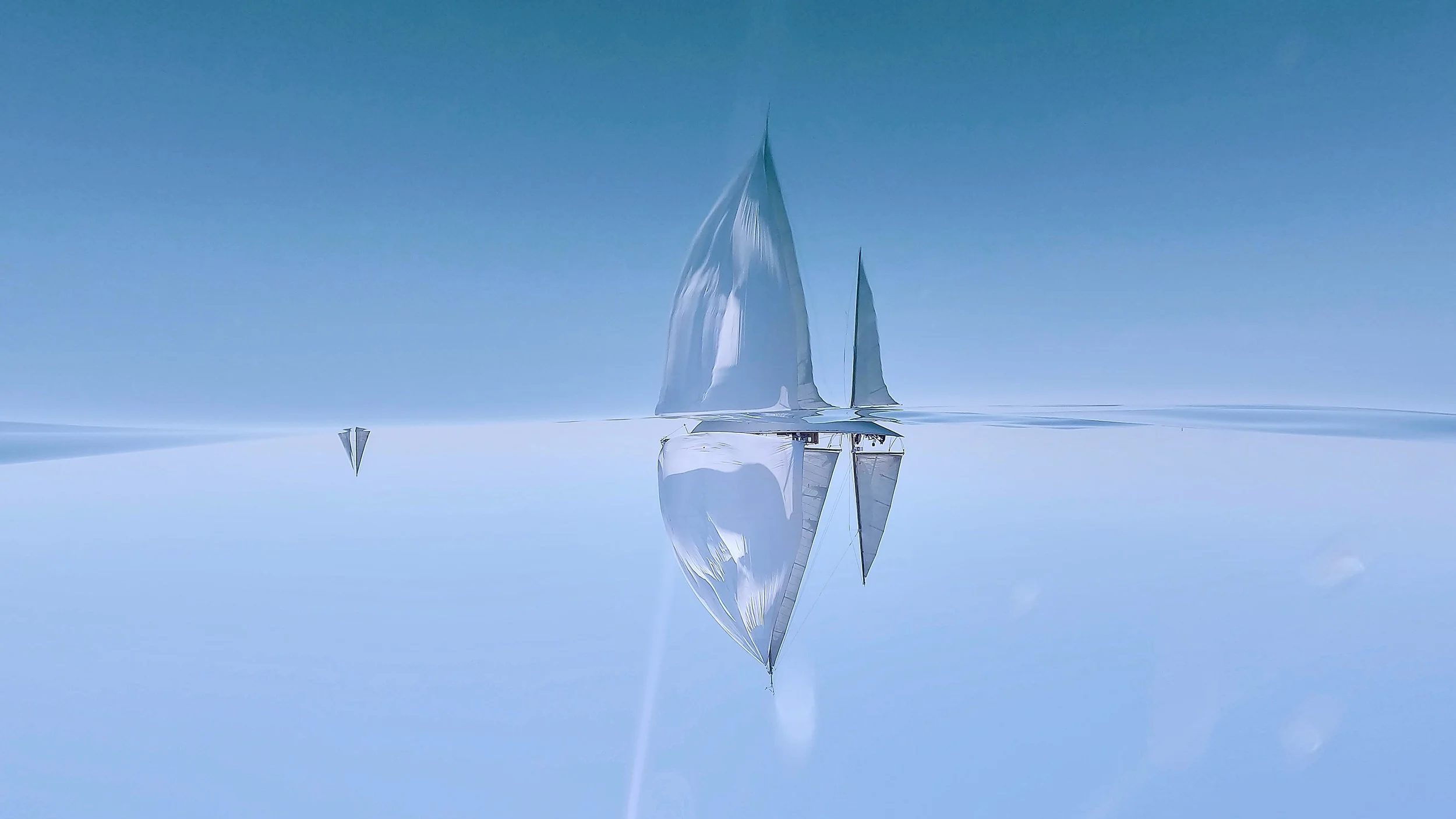Notes on the Intuitive Photographic Act
Suspended between the silence, the sky an the sea.
Seeing, like sailing, begins long before sight. It starts in the body — in balance, in pressure, in the small signals the world sends through air, salt, and motion. The camera, then, is not a tool but a continuation of that awareness, a way to translate what the senses already know.
When the wind fell, the sails stayed full for a breath — the ghost of motion holding its form. The sea flattened into a mirror so pure it felt like silence made visible. I lowered the camera almost to the water, guided not by thought but by that quiet certainty that sometimes rises inside — the kind of knowing that precedes reason.
A photograph is born from that alignment: when the body, the elements, and a flicker of vision coincide. It isn’t only about sensing; it’s about recognizing, in an instant, the pulse of an image before it appears — and letting the body act as the channel through which it becomes real.
We think of seeing as what the eye does, but it’s closer to what the whole being feels. Each image emerges from that convergence — from the conversation between intuition and matter, between air and water, between the inner tremor and the outer world.
In that space, perception becomes presence.
And for a moment, everything — hull, light, silence — holds itself perfectly between heaven and water.

